Machine-Learning-Based Frameworks for Reliable and Sustainable Crop Forecasting
Abstract
1. Introduction
2. Literature Review
3. Accessible Datasets for the Public in Crop Prediction
4. Analysis of Various Machine-Learning Techniques
4.1. Techniques for Supervised Learning
4.2. Techniques for Unsupervised Learning
4.3. Techniques for Deep Learning
4.4. Techniques for Ensemble Learning
5. Diverse Agricultural Techniques Employing Numerous Forecasting Models
5.1. Conventional Technique of Agriculture
5.2. Contemporary Precision Agriculture Technique
5.3. The Forecasting of Crops
5.4. Scope of Precision Agriculture in Crop Forecasting
5.5. Evaluation of Contemporary Models for Agricultural Yield Forecasting
6. Challenges and Future Scope of Agriculture Forecasting
Future Scope of Agriculture Forecasting
7. Conclusions
Author Contributions
Funding
Data Availability Statement
Conflicts of Interest
References
- Mukhamedova, K.R.; Cherepkova, N.P.; Korotkov, A.V.; Dagasheva, Z.B.; Tvaronavičienė, M. Digitalisation of agricultural production for precision farming: A case study. Sustainability 2022, 14, 14802. [Google Scholar] [CrossRef]
- Botero-Valencia, J.; García-Pineda, V.; Valencia-Arias, A.; Valencia, J.; Reyes-Vera, E.; Mejia-Herrera, M.; Hernández-García, R. Machine Learning in Sustainable Agriculture: Systematic Review and Research Perspectives. Agriculture 2025, 15, 377. [Google Scholar] [CrossRef]
- Nyéki, A.; Neményi, M. Crop yield prediction in precision agriculture. Agronomy 2022, 12, 2460. [Google Scholar] [CrossRef]
- Malashin, I.; Tynchenko, V.; Gantimurov, A.; Nelyub, V.; Borodulin, A.; Tynchenko, Y. Predicting sustainable crop yields: Deep learning and explainable AI tools. Sustainability 2024, 16, 9437. [Google Scholar] [CrossRef]
- Sishodia, R.P.; Ray, R.L.; Singh, S.K. Applications of remote sensing in precision agriculture: A review. Remote Sens. 2020, 12, 3136. [Google Scholar] [CrossRef]
- Mouratiadou, I.; Lemke, N.; Chen, C.; Wartenberg, A.; Bloch, R.; Donat, M.; Gaiser, T.; Basavegowda, D.H.; Helming, K.; Yekani, S.A.H.; et al. The Digital Agricultural Knowledge and Information System (DAKIS): Employing digitalisation to encourage diversified and multifunctional agricultural systems. Environ. Sci. Ecotechnol. 2023, 16, 100274. [Google Scholar] [CrossRef]
- Braidotti, G.; De Nobili, M.; Piani, L. Integrated Use of Local and Technical Soil Quality Indicators and Participatory Techniques to Select Them. A Review of Bibliography and Analysis of Research Strategies and Outcomes. Sustainability 2020, 13, 87. [Google Scholar] [CrossRef]
- Al-Gaadi, K.A.; Hassaballa, A.A.; Tola, E.; Kayad, A.G.; Madugundu, R.; Alblewi, B.; Assiri, F. Prediction of potato crop yield using precision agriculture techniques. PLoS ONE 2016, 11, e0162219. [Google Scholar] [CrossRef]
- Thilakarathne, N.N.; Bakar, M.S.A.; Abas, P.E.; Yassin, H. A cloud enabled crop recommendation platform for machine learning-driven precision farming. Sensors 2022, 22, 6299. [Google Scholar] [CrossRef]
- Yasam, S.; Nair, S.A.H.; Kumar, K.S. Supervised learning-based seed germination ability prediction for precision farming. Soft Comput. 2022, 26, 13133–13144. [Google Scholar] [CrossRef]
- Shaikh, T.A.; Mir, W.A.; Rasool, T.; Sofi, S. Machine learning for smart agriculture and precision farming: Towards making the fields talk. Arch. Comput. Methods Eng. 2022, 29, 4557–4597. [Google Scholar] [CrossRef]
- Finger, R.; Swinton, S.M.; El Benni, N.; Walter, A. Precision farming at the nexus of agricultural production and the environment. Annu. Rev. Resour. Econ. 2019, 11, 313–335. [Google Scholar] [CrossRef]
- Tsouros, D.C.; Bibi, S.; Sarigiannidis, P.G. A review on UAV-based applications for precision agriculture. Information 2019, 10, 349. [Google Scholar] [CrossRef]
- Ahmed, N.; De, D.; Hussain, I. Internet of Things (IoT) for smart precision agriculture and farming in rural areas. IEEE Internet Things J. 2018, 5, 4890–4899. [Google Scholar] [CrossRef]
- Yue, S.; Li, P.; Hao, P. SVM classification: Its contents and challenges. Appl. Math.-J. Chin. Univ. 2003, 18, 332–342. [Google Scholar] [CrossRef]
- Dreiseitl, S.; Ohno-Machado, L. Logistic regression and artificial neural network classification models: A methodology review. J. Biomed. Inform. 2002, 35, 352–359. [Google Scholar] [CrossRef] [PubMed]
- Guo, G.; Wang, H.; Bell, D.; Bi, Y.; Greer, K. KNN model-based approach in classification. In On the Move to Meaningful Internet Systems 2003: CoopIS, DOA, and ODBASE: OTM Confederated International Conferences CoopIS, DOA, and ODBASE 2003 Catania, Sicily, Italy, November 3–7, 2003 Proceedings; Springer: Berlin/Heidelberg, Germany, 2003; pp. 986–996. [Google Scholar] [CrossRef]
- Yang, F.J. An implementation of naive bayes classifier. In Proceedings of the 2018 International Conference on Computational Science and Computational Intelligence (CSCI), Las Vegas, NV, USA, 12–14 December 2018; pp. 301–306. [Google Scholar] [CrossRef]
- Parmar, A.; Katariya, R.; Patel, V. A review on random forest: An ensemble classifier. In International Conference on Intelligent Data Communication Technologies and Internet of Things (ICICI) 2018, Coimbatore, India, 7–8 August 2018; Springer International Publishing: Cham, Switzerland, 2019; pp. 758–763. [Google Scholar] [CrossRef]
- Nischitha, K.; Vishwakarma, D.; Ashwini, M.N.; Manjuraju, M.R. Crop prediction using machine learning approaches. Int. J. Eng. Res. Technol. (IJERT) 2020, 9, 23–26. [Google Scholar] [CrossRef]
- Patil, P.; Panpatil, V.; Kokate, S. Crop prediction system using machine learning algorithms. Int. Res. J. Eng. Technol. (IRJET) 2020, 7, 748–753. [Google Scholar]
- Elbasi, E.; Zaki, C.; Topcu, A.E.; Abdelbaki, W.; Zreikat, A.I.; Cina, E.; Shdefat, A.; Saker, L. Crop prediction model using machine learning algorithms. Appl. Sci. 2023, 13, 9288. [Google Scholar] [CrossRef]
- Thakre, L.; Nikhar, M. Crop Prediction Techniques with K-Means Algorithms. In Optimization Methods for Engineering Problems; Apple Academic Press: New York, NY, USA, 2023; pp. 225–237. Available online: https://www.taylorfrancis.com/chapters/edit/10.1201/9781003300731-16/crop-prediction-techniques-means-algorithms-laxman-thakre-mayur-nikhar (accessed on 3 April 2023).
- Suresh, A.; Kumar, P.G.; Ramalatha, M. Prediction of major crop yields of Tamilnadu using K-means and Modified KNN. In Proceedings of the 2018 3rd International Conference on Communication and Electronics Systems (ICCES), Coimbatore, India, 15–16 October 2018; pp. 88–93. [Google Scholar] [CrossRef]
- Ariza-Sentís, M.; Vélez, S.; Martínez-Peña, R.; Baja, H.; Valente, J. Object detection and tracking in Precision Farming: A systematic review. Comput. Electron. Agric. 2024, 219, 108757. [Google Scholar] [CrossRef]
- Nilsback, M.E.; Zisserman, A. A visual vocabulary for flower classification. In Proceedings of the 2006 IEEE Computer Society Conference on Computer Vision and Pattern recognition (CVPR’06), New York, NY, USA, 17–22 June 2006; Volume 2, pp. 1447–1454. [Google Scholar] [CrossRef]
- Hou, S.; Feng, Y.; Wang, Z. Vegfru: A domain-specific dataset for fine-grained visual categorization. In Proceedings of the IEEE International Conference on Computer Vision, Venice, Italy, 22–29 October 2017; pp. 541–549. [Google Scholar]
- Van Horn, G.; Mac Aodha, O.; Song, Y.; Cui, Y.; Sun, C.; Shepard, A.; Adam, H.; Perona, P.; Belongie, S. The inaturalist species classification and detection dataset. In Proceedings of the IEEE Conference on Computer Vision and Pattern Recognition, Salt Lake City, UT, USA, 18–23 June 2018; pp. 8769–8778. [Google Scholar]
- Wu, X.; Zhan, C.; Lai, Y.K.; Cheng, M.M.; Yang, J. Ip102: A large-scale benchmark dataset for insect pest recognition. In Proceedings of the IEEE/CVF Conference on Computer Vision and Pattern Recognition, Long Beach, CA, USA, 15–20 June 2019; pp. 8787–8796. [Google Scholar]
- Gené-Mola, J.; Sanz-Cortiella, R.; Rosell-Polo, J.R.; Morros, J.R.; Ruiz-Hidalgo, J.; Vilaplana, V.; Gregorio, E. Fuji-SfM dataset: A collection of annotated images and point clouds for Fuji apple detection and location using structure-from-motion photogrammetry. Data Brief 2020, 30, 105591. [Google Scholar] [CrossRef]
- Wang, R.; Liu, L.; Xie, C.; Yang, P.; Li, R.; Zhou, M. Agripest: A large-scale domain-specific benchmark dataset for practical agricultural pest detection in the wild. Sensors 2021, 21, 1601. [Google Scholar] [CrossRef] [PubMed]
- de Jong, S.; Baja, H.; Tamminga, K.; Valente, J. Apple mots: Detection, segmentation and tracking of homogeneous objects using mots. IEEE Robot. Autom. Lett. 2022, 7, 11418–11425. [Google Scholar] [CrossRef]
- Mignoni, M.E.; Honorato, A.; Kunst, R.; Righi, R.; Massuquetti, A. Soybean images dataset for caterpillar and Diabrotica speciosa pest detection and classification. Data Brief 2022, 40, 107756. [Google Scholar] [CrossRef] [PubMed]
- Amraoui, K.E.; Lghoul, M.; Ezzaki, A.; Masmoudi, L.; Hadri, M.; Elbelrhiti, H.; Simo, A.A. Avo-AirDB: An avocado UAV Database for agricultural image segmentation and classification. Data Brief 2022, 45, 108738. [Google Scholar] [CrossRef]
- Giakoumoglou, N.; Pechlivani, E.M.; Sakelliou, A.; Klaridopoulos, C.; Frangakis, N.; Tzovaras, D. Deep learning-based multi-spectral identification of grey mould. Smart Agric. Technol. 2023, 4, 100174. [Google Scholar] [CrossRef]
- Ariza-Sentís, M.; Vélez, S.; Valente, J. Dataset on UAV RGB videos acquired over a vineyard including bunch labels for object detection and tracking. Data Brief 2023, 46, 108848. [Google Scholar] [CrossRef] [PubMed]
- Güldenring, R.; Van Evert, F.K.; Nalpantidis, L. RumexWeeds: A grassland dataset for agricultural robotics. J. Field Robot. 2023, 40, 1639–1656. [Google Scholar] [CrossRef]
- Venkatesh, K.; Naik, K.J. An IoT framework for groundnut crop yield prediction using K-means algorithm. In Proceedings of the 2021 International Conference on Data Analytics for Business and Industry (ICDABI), Sakheer, Bahrain, 25–26 October 2021; pp. 266–271. [Google Scholar] [CrossRef]
- Islam, M.M.; Adil, M.A.A.; Talukder, M.A.; Ahamed, M.K.U.; Uddin, M.A.; Hasan, M.K.; Sharmin, S.; Rahman, M.; Debnath, S.K. DeepCrop: Deep learning-based crop disease prediction with web application. J. Agric. Food Res. 2023, 14, 100764. [Google Scholar] [CrossRef]
- Vani, P.S.; Rathi, S. Improved data clustering methods and integrated A-FP algorithm for crop yield prediction. Distrib. Parallel Databases 2023, 41, 117–131. [Google Scholar] [CrossRef]
- Mustapha, A.A.; Yoosuf, M.S. Exploring the efficacy and comparative analysis of one-stage object detectors for computer vision: A review. Multimed. Tools Appl. 2024, 83, 59143–59168. [Google Scholar] [CrossRef]
- Balakrishna, S.; Mustapha, A.A. Progress in multi-object detection models: A comprehensive survey. Multimed. Tools Appl. 2023, 82, 22405–22439. [Google Scholar] [CrossRef]
- Häni, N.; Roy, P.; Isler, V. A comparative study of fruit detection and counting methods for yield mapping in apple orchards. J. Field Robot. 2020, 37, 263–282. [Google Scholar] [CrossRef]
- Koirala, A.; Walsh, K.B.; Wang, Z.; McCarthy, C. Deep learning–Method overview and review of use for fruit detection and yield estimation. Comput. Electron. Agric. 2019, 162, 219–234. [Google Scholar] [CrossRef]
- Van Klompenburg, T.; Kassahun, A.; Catal, C. Crop yield prediction using machine learning: A systematic literature review. Comput. Electron. Agric. 2020, 177, 105709. [Google Scholar] [CrossRef]
- Lee, S.; Jeong, Y.; Son, S.; Lee, B. A self-predictable crop yield platform (SCYP) based on crop diseases using deep learning. Sustainability 2019, 11, 3637. [Google Scholar] [CrossRef]
- Chlingaryan, A.; Sukkarieh, S.; Whelan, B. Machine learning approaches for crop yield prediction and nitrogen status estimation in precision agriculture: A review. Comput. Electron. Agric. 2018, 151, 61–69. [Google Scholar] [CrossRef]
- Zhang, Q.; Liu, Y.; Gong, C.; Chen, Y.; Yu, H. Applications of deep learning for dense scenes analysis in agriculture: A review. Sensors 2020, 20, 1520. [Google Scholar] [CrossRef]
- Agarwal, B.; Pokhriyal, S.; Vats, S.; Sharma, V.; Rawat, P.; Bajaj, M. Crop prediction using ensemble learning. In Proceedings of the 2023 5th International Conference on Inventive Research in Computing Applications (ICIRCA), Coimbatore, India, 3–5 August 2023; pp. 90–95. [Google Scholar] [CrossRef]
- Keerthana, M.; Meghana, K.J.M.; Pravallika, S.; Kavitha, M. An ensemble algorithm for crop yield prediction. In Proceedings of the 2021 Third International Conference on Intelligent Communication Technologies and Virtual Mobile Networks (ICICV), Tirunelveli, India, 4–6 February 2021; pp. 963–970. [Google Scholar] [CrossRef]
- Nti, I.K.; Zaman, A.; Nyarko-Boateng, O.; Adekoya, A.F.; Keyeremeh, F. A predictive analytics model for crop suitability and productivity with tree-based ensemble learning. Decis. Anal. J. 2023, 8, 100311. [Google Scholar] [CrossRef]
- Zheng, Y.Y.; Kong, J.L.; Jin, X.B.; Wang, X.Y.; Su, T.L.; Zuo, M. CropDeep: The crop vision dataset for deep-learning-based classification and detection in precision agriculture. Sensors 2019, 19, 1058. [Google Scholar] [CrossRef]
- Santos, T.T.; De Souza, L.L.; dos Santos, A.A.; Avila, S. Grape detection, segmentation, and tracking using deep neural networks and three-dimensional association. Comput. Electron. Agric. 2020, 170, 105247. [Google Scholar] [CrossRef]
- Sudars, K.; Jasko, J.; Namatevs, I.; Ozola, L.; Badaukis, N. Dataset of annotated food crops and weed images for robotic computer vision control. Data Brief 2020, 31, 105833. [Google Scholar] [CrossRef]
- Häni, N.; Roy, P.; Isler, V. MinneApple: A benchmark dataset for apple detection and segmentation. IEEE Robot. Autom. Lett. 2020, 5, 852–858. [Google Scholar] [CrossRef]
- Garcia-Llorente, M.; Rubio-Olivar, R.; Gutierrez-Briceno, I. Farming for life quality and sustainability: A literature review of green care research trends in Europe. Int. J. Environ. Res. Public Health 2018, 15, 1282. [Google Scholar] [CrossRef] [PubMed]
- Pawlak, K.; Kołodziejczak, M. The role of agriculture in ensuring food security in developing countries: Considerations in the context of the problem of sustainable food production. Sustainability 2020, 12, 5488. [Google Scholar] [CrossRef]
- Morell-Hart, S.; Dussol, L.; Fedick, S.L. Agriculture in the ancient Maya lowlands (Part 1): Paleoethnobotanical residues and new perspectives on plant management. J. Archaeol. Res. 2023, 31, 561–615. [Google Scholar] [CrossRef]
- Ghosh, S.; Dasgupta, R. Machine learning and precision farming. In Machine Learning in Biological Sciences: Updates and Future Prospects; Springer Nature Singapore: Singapore, 2022; pp. 239–249. [Google Scholar] [CrossRef]
- Avadhani, S.S.; Arun, A.B.; Govinda, V.; Inamdar, J.S.I. Crop Prediction Models—A Review. In Emerging Technologies in Data Mining and Information Security: Proceedings of IEMIS 2018; Springer: Singapore, 2019; Volume 755, pp. 13–17. [Google Scholar] [CrossRef]
- Maduranga, M.W.P.; Abeysekera, R. Machine learning applications in IoT based agriculture and smart farming: A review. Int. J. Eng. Appl. Sci. Technol. 2020, 4, 24–27. [Google Scholar] [CrossRef]
- Benos, L.; Tagarakis, A.C.; Dolias, G.; Berruto, R.; Kateris, D.; Bochtis, D. Machine learning in agriculture: A comprehensive updated review. Sensors 2021, 21, 3758. [Google Scholar] [CrossRef] [PubMed]
- Yang, D.; Zhao, J.; Lan, Y.; Wen, Y.; Pan, F.; Cao, D.; Hu, C.; Guo, J. Research on farmland crop classification based on UAV multispectral remote sensing images. Int. J. Precis. Agric. Aviat. 2021, 4, 29–35. [Google Scholar] [CrossRef]
- Pawar, S.; Dere, S.; Akangire, A.; Kamble, H.; Shrawne, S. Smart farming using machine learning. Smart Comput. 2021, 73–81. Available online: https://www.researchgate.net/publication/351692492_SMART_FARMING_USING_MACHINE_LEARNING (accessed on 3 April 2023).
- Bondre, D.A.; Mahagaonkar, S. Prediction of crop yield and fertilizer recommendation using machine learning algorithms. Int. J. Eng. Appl. Sci. Technol. 2019, 4, 371–376. [Google Scholar] [CrossRef]
- Maya Gopal, P.S.; Bhargavi, R. Selection of important features for optimizing crop yield prediction. Int. J. Agric. Environ. Inf. Syst. (IJAEIS) 2019, 10, 54–71. [Google Scholar] [CrossRef]
- Mupangwa, W.; Chipindu, L.; Nyagumbo, I.; Mkuhlani, S.; Sisito, G. Evaluating machine learning algorithms for predicting maize yield under conservation agriculture in Eastern and Southern Africa. SN Appl. Sci. 2020, 2, 952. [Google Scholar] [CrossRef]
- Murugamani, C.; Shitharth, S.; Hemalatha, S.; Kshirsagar, P.R.; Riyazuddin, K.; Naveed, Q.N.; Islam, S.; Ali, S.P.M.; Batu, A. Machine Learning Technique for Precision Agriculture Applications in 5G-Based Internet of Things. Wirel. Commun. Mob. Comput. 2022, 2022, 6534238. [Google Scholar] [CrossRef]
- Senapati, C.; Senapati, S.; Swain, S.; Patra, K.J.; Pattanayak, B.K.; Laha, S.R. Advancements in Precision Agriculture: A Machine Learning-Based Approach for Crop Management Optimization. In Sustainable Farming Through Machine Learning; CRC Press: Boca Raton, FL, USA, 2024; pp. 162–173. [Google Scholar]
- Muneshwara, M.S.; Gracias, A.A.; Neha, C.G.; Preethi, A.S. Soil fertility analysis and crop prediction using machine learning. Int. J. Innov. Technol. Explor. Eng. 2020, 9, 380–383. [Google Scholar] [CrossRef]
- Khaki, S.; Wang, L.; Archontoulis, S.V. A CNN-RNN framework for crop yield prediction. Front. Plant Sci. 2020, 10, 1750. [Google Scholar] [CrossRef]
- Agarwal, S.; Tarar, S. A hybrid approach for crop yield prediction using machine learning and deep learning algorithms. J. Phys. Conf. Ser. 2021, 1714, 012012. [Google Scholar] [CrossRef]
- Kwaghtyo, D.K.; Eke, C.I. Smart farming prediction models for precision agriculture: A comprehensive survey. Artif. Intell. Rev. 2023, 56, 5729–5772. [Google Scholar] [CrossRef]
- Saranya, T.; Deisy, C.; Sridevi, S.; Anbananthen, K.S.M. A Comparative study of deep learning and Internet of Things for precision agriculture. Eng. Appl. Artif. Intell. 2023, 122, 106034. [Google Scholar] [CrossRef]
- Sharma, S.; Vardhan, M. Advancing precision agriculture: Enhanced weed detection using the optimized YOLOv8T model. Arab. J. Sci. Eng. 2024, 1–18. [Google Scholar] [CrossRef]
- Yan, B.; Liu, Y.; Yan, W. A novel fusion perception algorithm of tree branch/trunk and apple for harvesting robot based on improved YOLOv8s. Agronomy 2024, 14, 1895. [Google Scholar] [CrossRef]
- Thimmegowda, M.N.; Manjunatha, M.H.; Lingaraj, H.; Soumya, D.V.; Jayaramaiah, R.; Sathisha, G.S.; Nagesha, L. Comparative analysis of machine learning and statistical models for cotton yield prediction in major growing districts of Karnataka, India. J. Cotton Res. 2025, 8, 6. [Google Scholar] [CrossRef]
- Suruliandi, A.; Mariammal, G.; Raja, S.P. Crop prediction based on soil and environmental characteristics using feature selection techniques. Math. Comput. Model. Dyn. Syst. 2021, 27, 117–140. [Google Scholar] [CrossRef]
- Mishra, S.; Mishra, D.; Santra, G.H. Adaptive boosting of weak regressors for forecasting of crop production considering climatic variability: An empirical assessment. J. King Saud Univ.-Comput. Inf. Sci. 2020, 32, 949–964. [Google Scholar] [CrossRef]
- Gupta, M.; Abdelsalam, M.; Khorsandroo, S.; Mittal, S. Security and privacy in smart farming: Challenges and opportunities. IEEE Access 2020, 8, 34564–34584. [Google Scholar] [CrossRef]
- Belanche, A.; Martín-García, A.I.; Fernández-Álvarez, J.; Pleguezuelos, J.; Mantecón, Á.R.; Yáñez-Ruiz, D.R. Optimizing management of dairy goat farms through individual animal data interpretation: A case study of smart farming in Spain. Agric. Syst. 2019, 173, 27–38. [Google Scholar] [CrossRef]
- Guesmi, B.; Serra, T. Can we improve farm performance? The determinants of farm technical and environmental efficiency. Appl. Econ. Perspect. Policy 2015, 37, 692–717. [Google Scholar] [CrossRef]
- Dholu, M.; Ghodinde, K.A. Internet of things (IoT) for precision agriculture application. In Proceedings of the 2018 2nd International Conference on Trends in Electronics and Informatics (ICOEI), Tirunelveli, India, 11–12 May 2018; pp. 339–342. [Google Scholar] [CrossRef]
- Stewart-Koster, B.; Anh, N.D.; Burford, M.A.; Condon, J.; Van Qui, N.; Van Bay, D.; Sammut, J. Expert based model building to quantify risk factors in a combined aquaculture-agriculture system. Agric. Syst. 2017, 157, 230–240. [Google Scholar] [CrossRef]
- Rosen, M.A. Engineering sustainability: A technical approach to sustainability. Sustainability 2012, 4, 2270–2292. [Google Scholar] [CrossRef]
- Donati, L.; Iotti, E.; Mordonini, G.; Prati, A. Fashion product classification through deep learning and computer vision. Appl. Sci. 2019, 9, 1385. [Google Scholar] [CrossRef]
- Bendre, M.R.; Thool, R.C.; Thool, V.R. Big data in precision agriculture: Weather forecasting for future farming. In Proceedings of the 2015 1st International Conference on Next Generation Computing Technologies (NGCT), Dehradun, India, 4–5 September 2015; pp. 744–750. [Google Scholar] [CrossRef]
- Aslan, M.F.; Sabanci, K.; Aslan, B. Artificial intelligence techniques in crop yield estimation based on Sentinel-2 data: A comprehensive survey. Sustainability 2024, 16, 8277. [Google Scholar] [CrossRef]
- Singh, K.; Yadav, M.; Singh, Y.; Barak, D.; Saini, A.; Moreira, F. Reliability on the Internet of Things with designing approach for exploratory analysis. Front. Comput. Sci. 2024, 6, 1382347. [Google Scholar] [CrossRef]
- Lu, J.; Li, J.; Fu, H.; Tang, X.; Liu, Z.; Chen, H.; Sun, Y.; Ning, X. Deep learning for multi-source data-driven crop yield prediction in northeast China. Agriculture 2024, 14, 794. [Google Scholar] [CrossRef]
- Darwin, B.; Dharmaraj, P.; Prince, S.; Popescu, D.E.; Hemanth, D.J. Recognition of bloom/yield in crop images using deep learning models for smart agriculture: A review. Agronomy 2021, 11, 646. [Google Scholar] [CrossRef]
- Pena, A.; Tejada, J.C.; Gonzalez-Ruiz, J.D.; Gongora, M. Deep learning to improve the sustainability of agricultural crops affected by phytosanitary events: A financial-risk approach. Sustainability 2022, 14, 6668. [Google Scholar] [CrossRef]
- Teixeira, I.; Morais, R.; Sousa, J.J.; Cunha, A. Deep learning models for the classification of crops in aerial imagery: A review. Agriculture 2023, 13, 965. [Google Scholar] [CrossRef]
- Joshi, A.; Pradhan, B.; Gite, S.; Chakraborty, S. Remote-sensing data and deep-learning techniques in crop mapping and yield prediction: A systematic review. Remote Sens. 2023, 15, 2014. [Google Scholar] [CrossRef]
- Abbasi, M.; Váz, P.; Silva, J.; Martins, P. Machine learning approaches for predicting maize biomass yield: Leveraging feature engineering and comprehensive data integration. Sustainability 2025, 17, 256. [Google Scholar] [CrossRef]
- Radočaj, D.; Jurišić, M. GIS-based cropland suitability prediction using machine learning: A novel approach to sustainable agricultural production. Agronomy 2022, 12, 2210. [Google Scholar] [CrossRef]
- Assous, H.F.; AL-Najjar, H.; Al-Rousan, N.; AL-Najjar, D. Developing a sustainable machine learning model to predict crop yield in the Gulf countries. Sustainability 2023, 15, 9392. [Google Scholar] [CrossRef]
- Ali, Z.; Muhammad, A.; Lee, N.; Waqar, M.; Lee, S.W. Artificial Intelligence for Sustainable Agriculture: A Comprehensive Review of AI-Driven Technologies in Crop Production. Sustainability 2025, 17, 2281. [Google Scholar] [CrossRef]
- Tamayo-Vera, D.; Wang, X.; Mesbah, M. A review of machine learning techniques in agroclimatic studies. Agriculture 2024, 14, 481. [Google Scholar] [CrossRef]

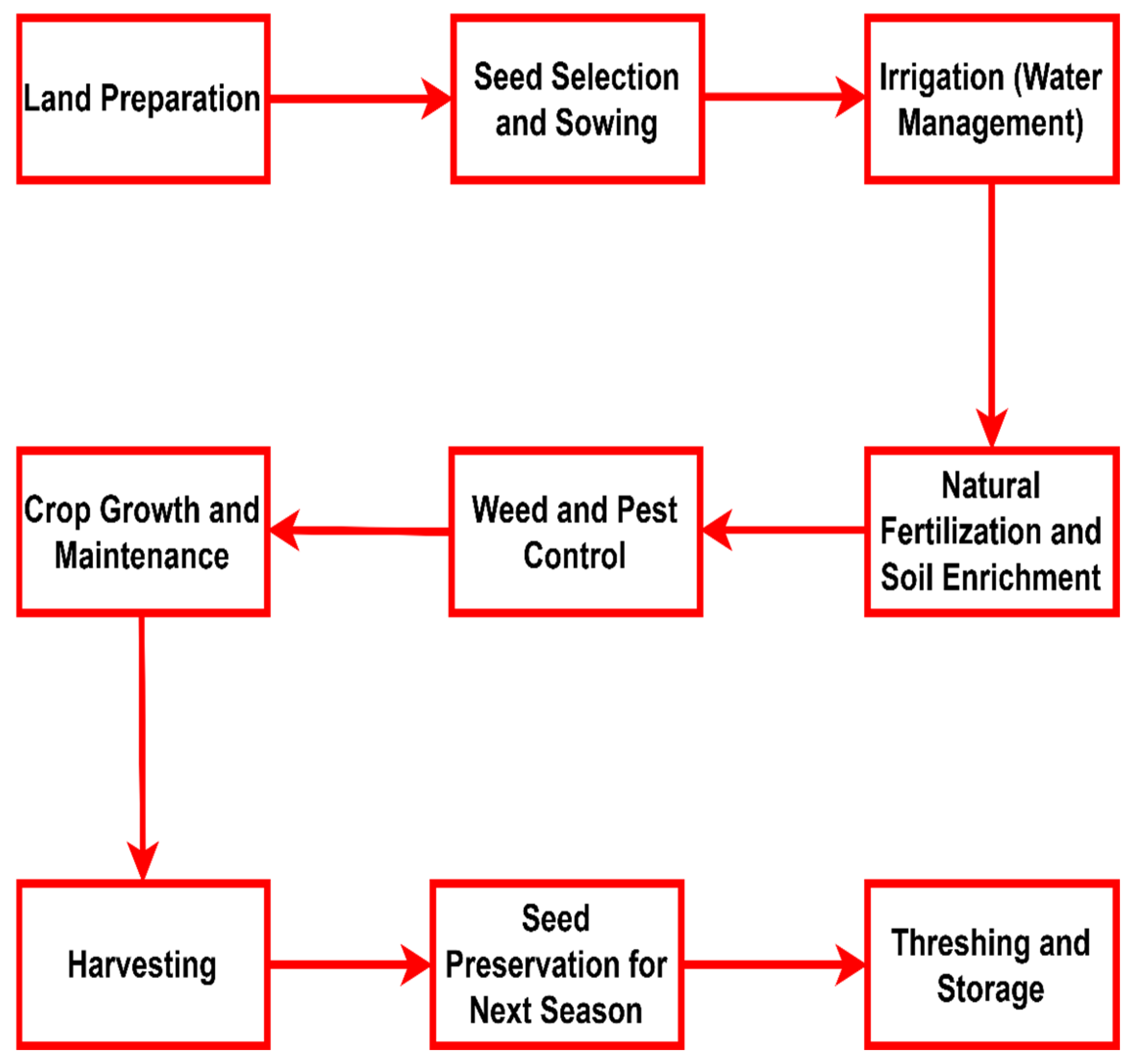
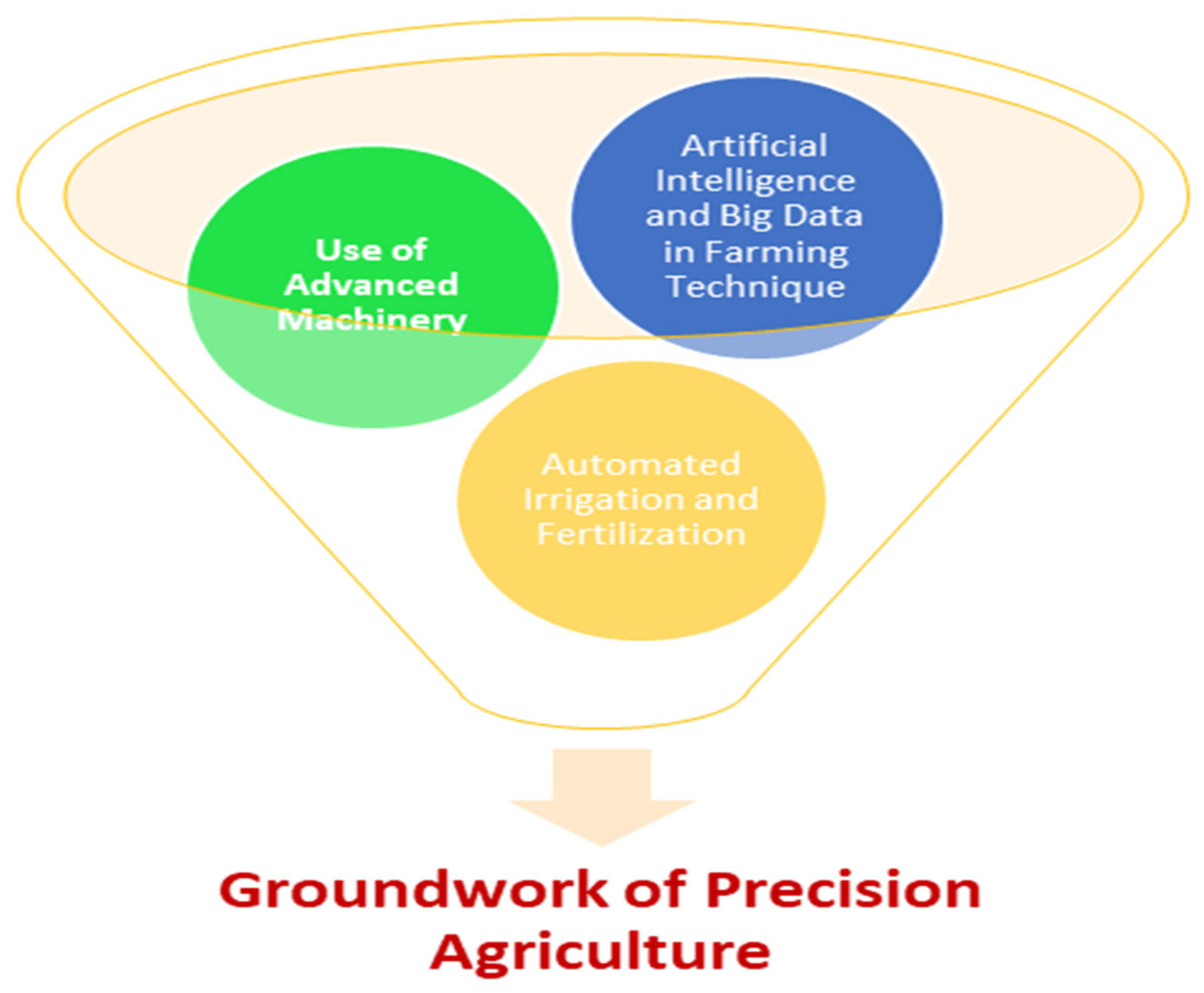
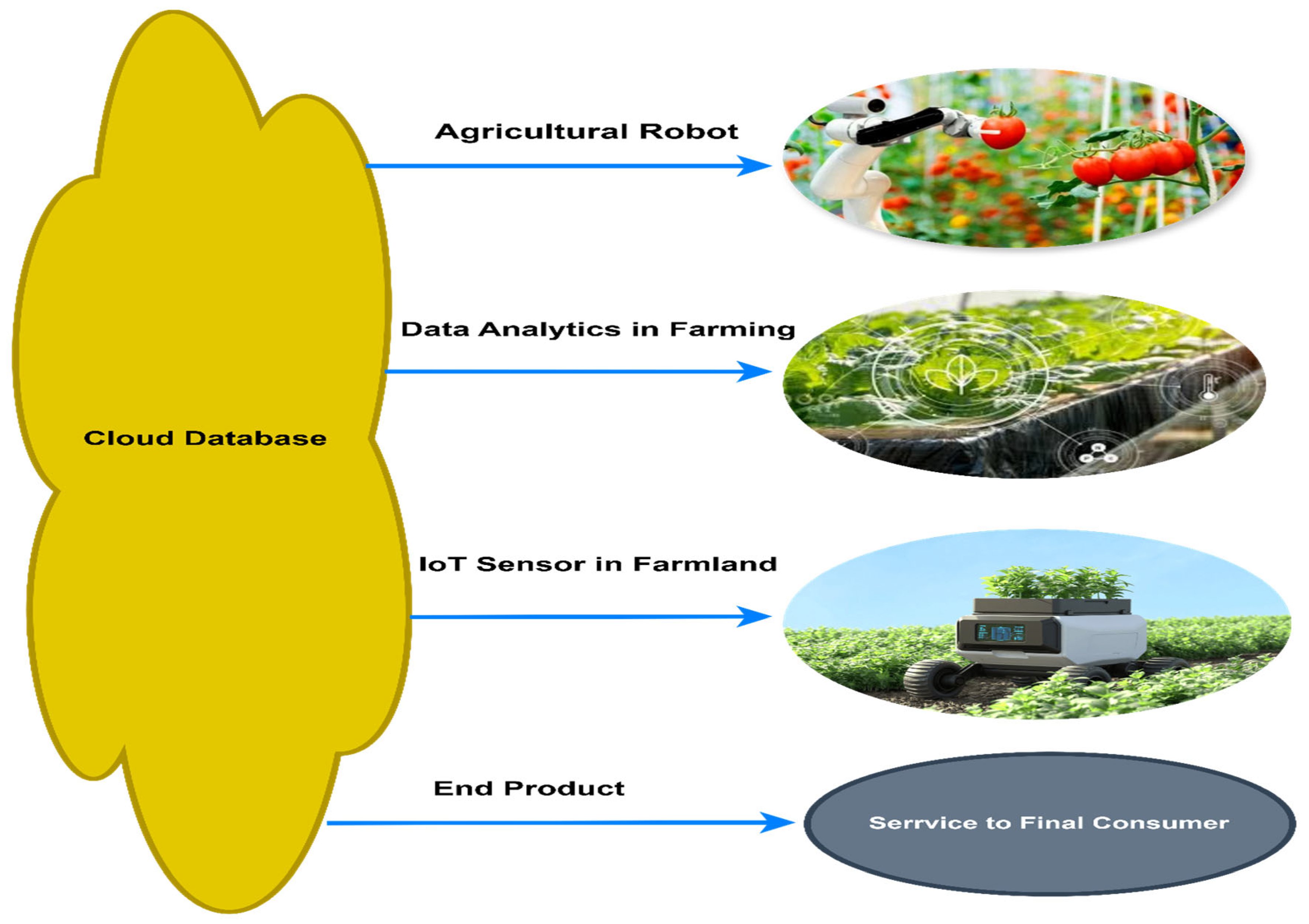
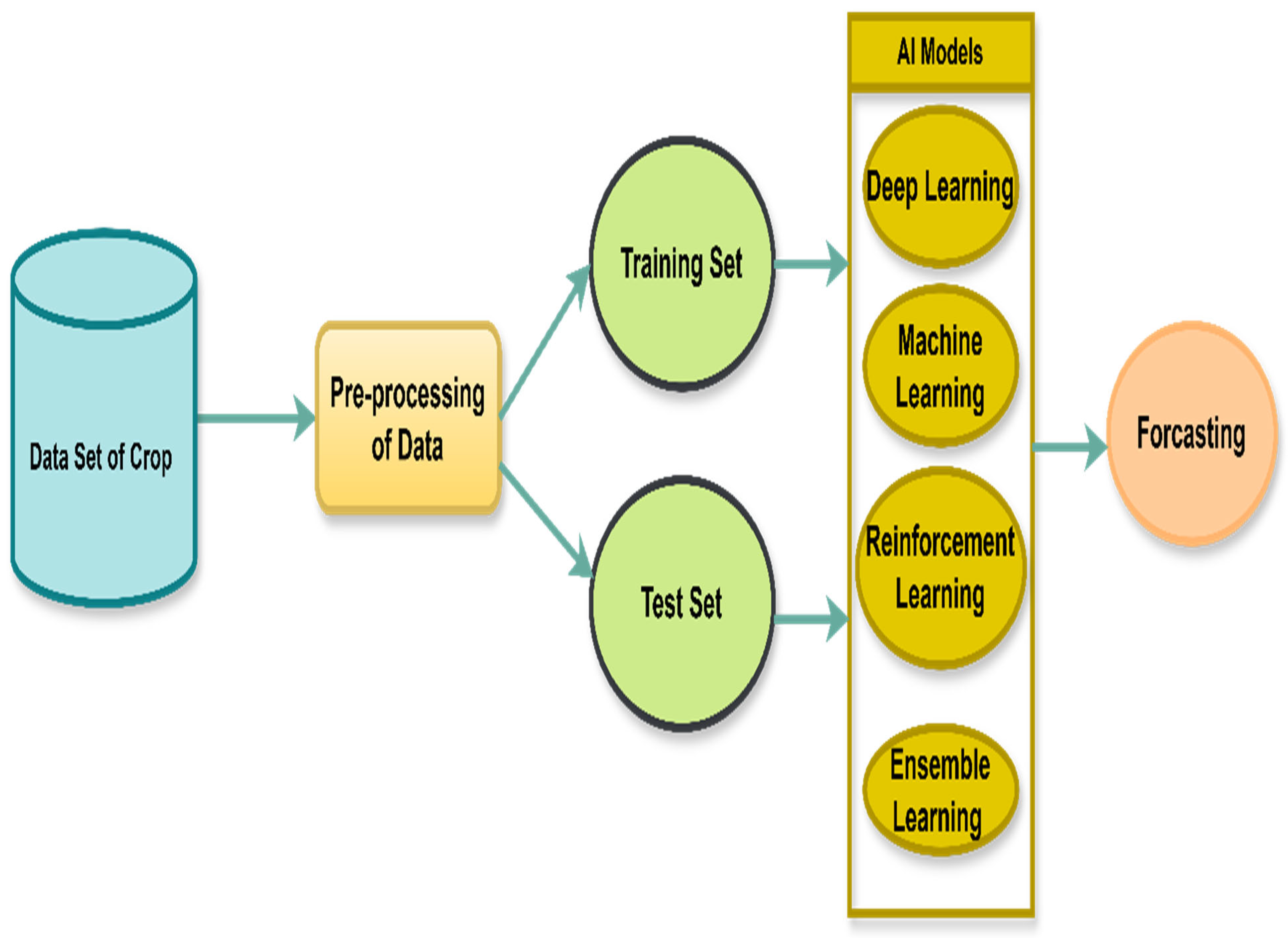
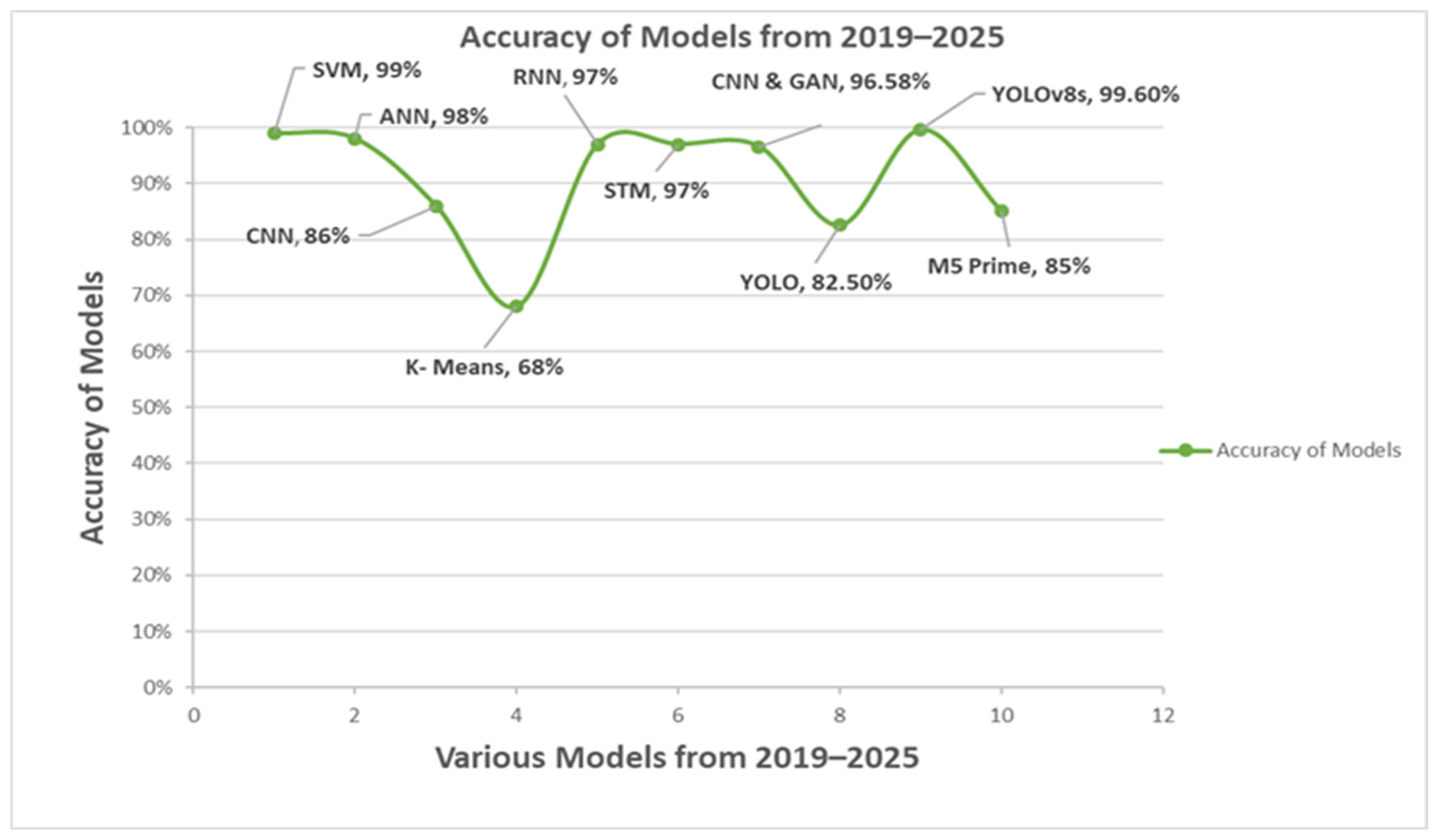
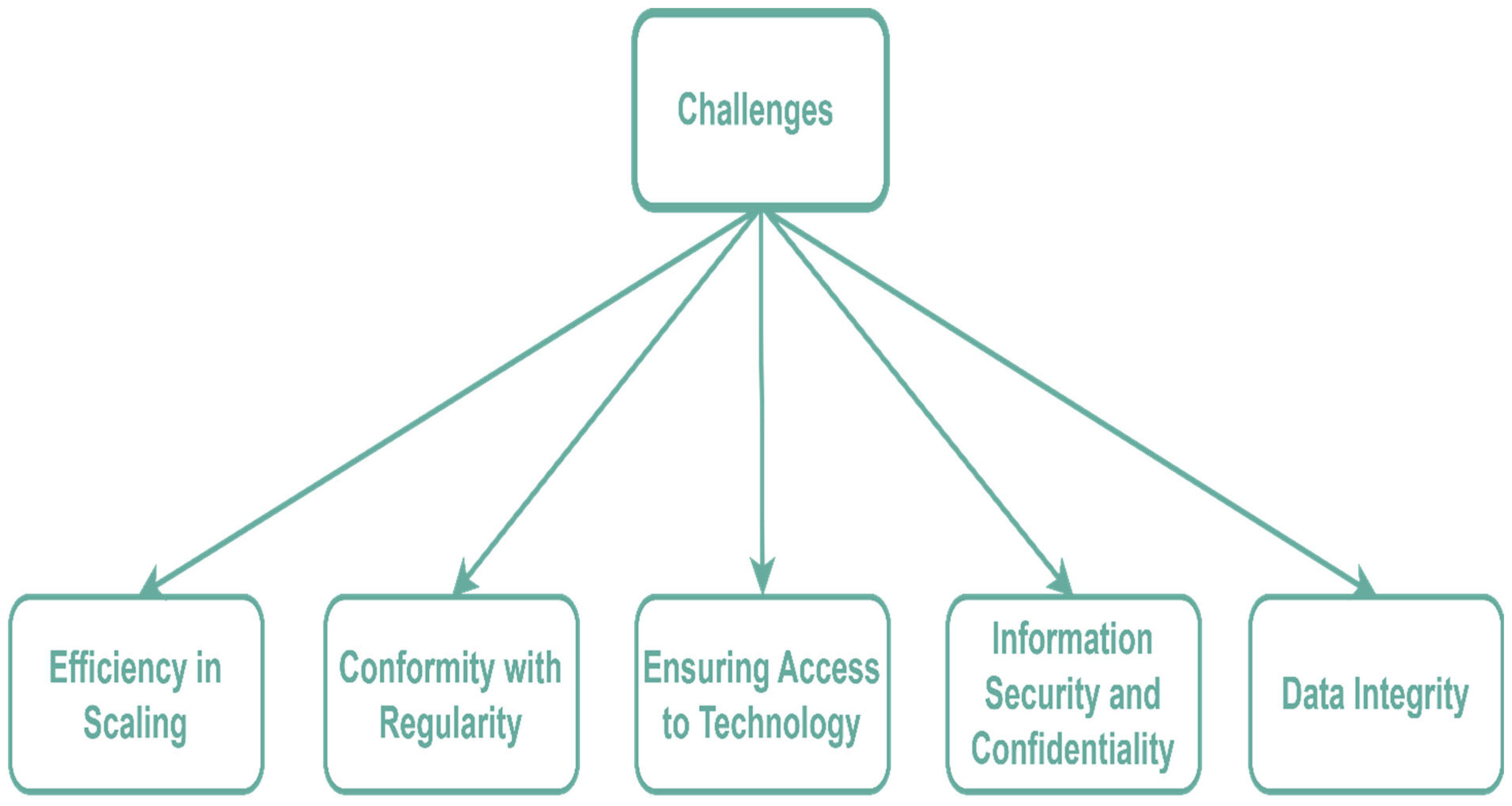
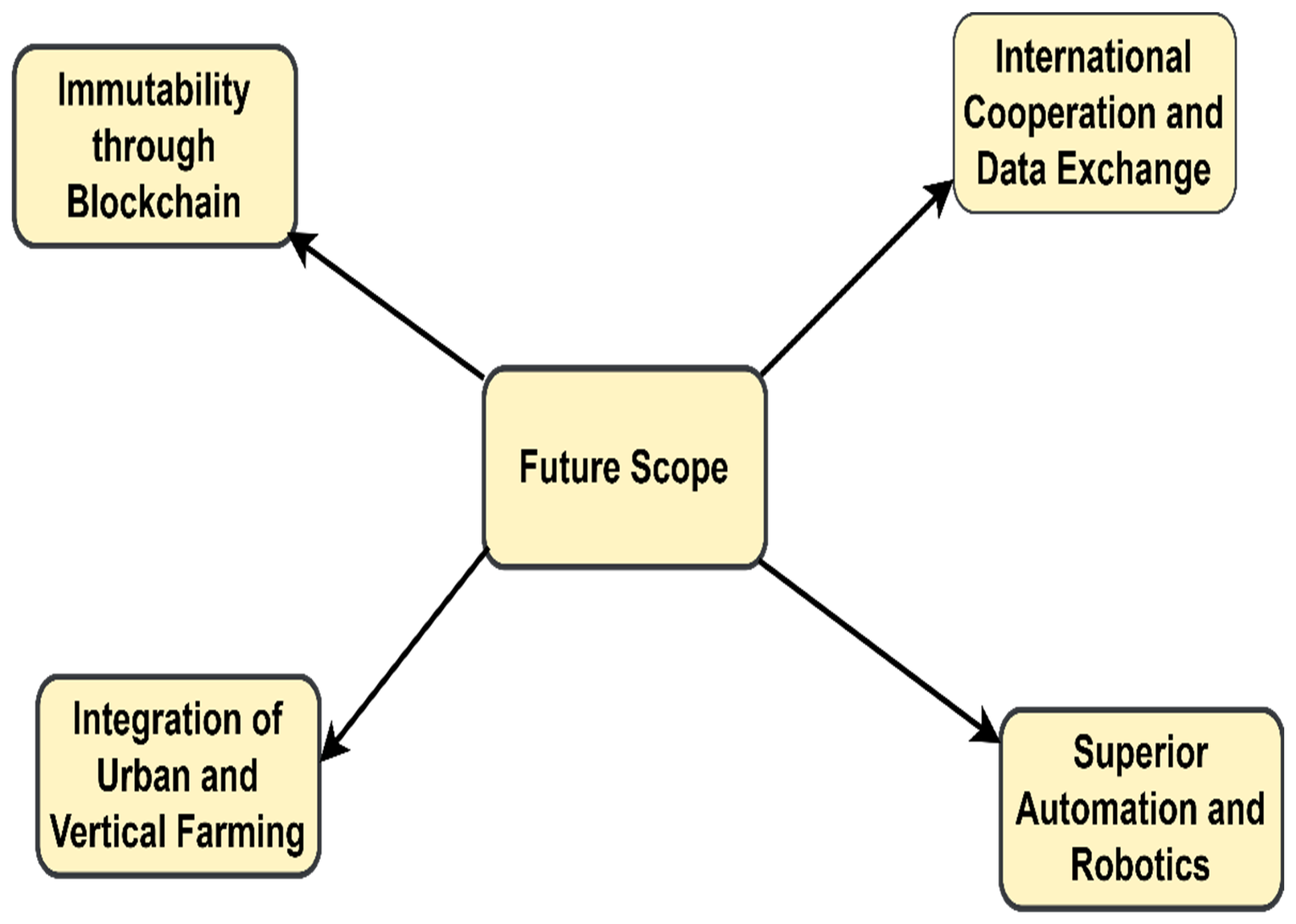
| Reference | Purpose/Goals | Year | Method | Numbers of Objects |
|---|---|---|---|---|
| [26] | Flower Classification | (2006) | Standard Method | 1360 |
| [27] | Fruit and Vegetable Categorization | (2017) | Fusion Method | ~160,000 |
| [28] | Species Categorization and Detection | (2018) | R-CNN | ~6.6 M |
| [29] | Pest Detection | (2019) | Deep Learning | 18,983 images |
| [30] | Fruit Detection | (2020) | R-CNN | 1455 |
| [31] | Pest Detection | (2021) | Deep Learning | ~264,700 |
| [32] | Fruit Detection and Tracking | (2022) | R-CNN | ~86,000 |
| [33] | Pest Detection | (2022) | AI-based Algorithm | 6410 images |
| [34] | Tree Counting, Disease Recognition, Classification, and Integration | (2022) | AI-based Methods | 93 |
| [35] | Grey Mold Recognition | (2023) | Deep Learning | 121 |
| [36] | Fruit Recognition and Tracking | (2023) | Object Detection and Tracking Algorithms | ~8000 |
| [37] | Grassland Recognition for Farming Robotics | (2023) | Object Detection Algorithms | 15,519 |
| Techniques | Year | Authors | Algorithm(s) | Accuracy | Types of Vegetation |
|---|---|---|---|---|---|
| Supervised learning | (2021) | Pawar et al. [64] | NB | 95% | Staple grains, pulses, oilseeds, vegetables, and fruits |
| (2019) | Bondre and Mahagaonkar [65] | SVM | 99.47% | Wheat, rice, pulses, oilseeds, maize, and vegetables | |
| (2019) | Mayagopal and Bhargavi [66] | M5 Prime | 85% | Wheat rice, pulses, oilseeds, maize, and vegetables | |
| (2020) | Mupangwa et al. [67] | LR | 58% | Maize | |
| KNN | 54% | ||||
| (2022) | Murugamani et al. [68] | SVM | 98.34% | Lettuce | |
| (2024) | Senapati et al. [69] | SVM | 97.2% | Multiple vegetation types depend on input and regional suitability | |
| Unsupervised learning | (2021) | Pawar et al. [64] | K-means | 67.875% | Trees, shrubs, and grasses |
| Deep learning | (2020) | Muneshwara et al. [70] | ANN | 98% | Multiple vegetation based on soil fertility and local agronomic conditions |
| (2020) | Khaki et al. [71] | CNN | 85.82% | Corn (maize) and soybean | |
| (2021) | Agarwal and Tarar [72] | RNN | 97% | Wheat, rice, pulses, oilseeds, maize, and vegetables | |
| LSTM | 97% | ||||
| (2020) | Kwaghtyo, Dekera Kenneth, and Christopher Ifeanyi Eke et al. [73] | ANN | 98% | Pulses, wheat, oilseeds, maize, vegetables, fruits, and legumes | |
| (2023) | Saranya et al. [74] | CNN & GAN | 96.58% | Rice, wheat, maize, pulses, oilseeds, vegetables, and fruits | |
| (2024) | Sharma & Vardhan [75] | Object Detection Algorithm YOLO | 82.5% | Cotton, wheat, and corn | |
| (2024) | Yan et al. [76] | YOLOv8s | 99.6% | Apple fruits, tree branches, and trunks | |
| (2025) | Thimmegowda [77] | ANN | 95.26% | Cotton | |
| Ensemble learning | (2021) | Suruliandi et al. [78] | Bagging | 89% | Wheat, maize, rice, pulses, oilseeds, and vegetables |
| (2020) | Mishra et al. [79] | Adaptive Enhancement | 99.69% | Rice |
Disclaimer/Publisher’s Note: The statements, opinions and data contained in all publications are solely those of the individual author(s) and contributor(s) and not of MDPI and/or the editor(s). MDPI and/or the editor(s) disclaim responsibility for any injury to people or property resulting from any ideas, methods, instructions or products referred to in the content. |
© 2025 by the authors. Licensee MDPI, Basel, Switzerland. This article is an open access article distributed under the terms and conditions of the Creative Commons Attribution (CC BY) license (https://creativecommons.org/licenses/by/4.0/).
Share and Cite
Singh, K.; Yadav, M.; Barak, D.; Bansal, S.; Moreira, F. Machine-Learning-Based Frameworks for Reliable and Sustainable Crop Forecasting. Sustainability 2025, 17, 4711. https://doi.org/10.3390/su17104711
Singh K, Yadav M, Barak D, Bansal S, Moreira F. Machine-Learning-Based Frameworks for Reliable and Sustainable Crop Forecasting. Sustainability. 2025; 17(10):4711. https://doi.org/10.3390/su17104711
Chicago/Turabian StyleSingh, Khushwant, Mohit Yadav, Dheerdhwaj Barak, Shivani Bansal, and Fernando Moreira. 2025. "Machine-Learning-Based Frameworks for Reliable and Sustainable Crop Forecasting" Sustainability 17, no. 10: 4711. https://doi.org/10.3390/su17104711
APA StyleSingh, K., Yadav, M., Barak, D., Bansal, S., & Moreira, F. (2025). Machine-Learning-Based Frameworks for Reliable and Sustainable Crop Forecasting. Sustainability, 17(10), 4711. https://doi.org/10.3390/su17104711








